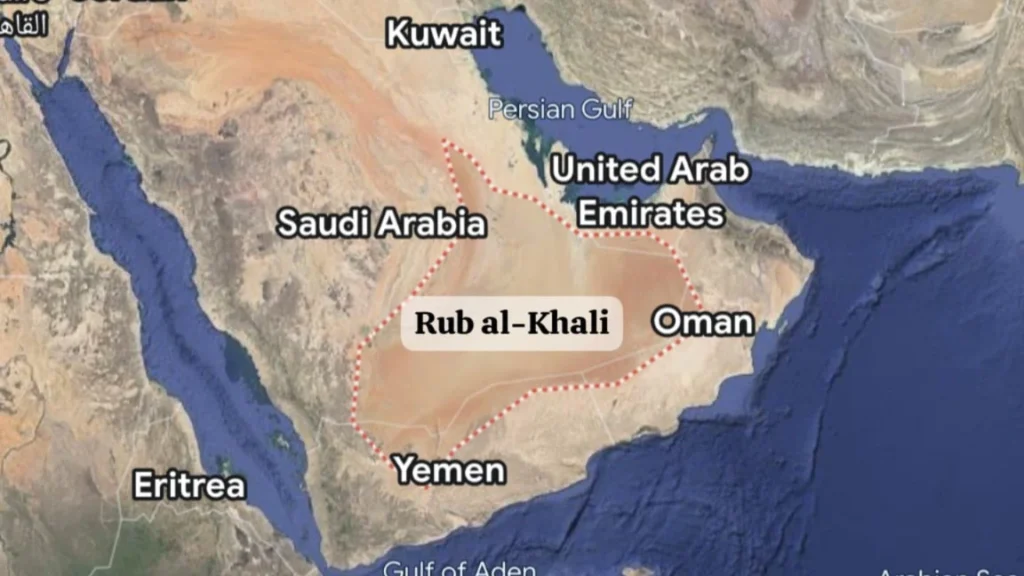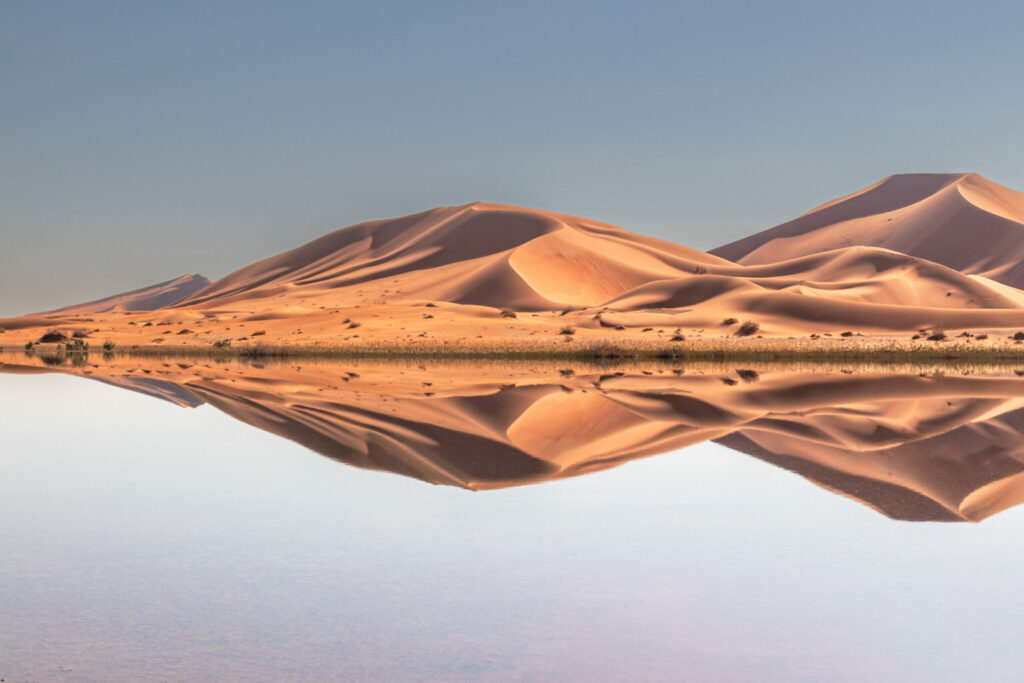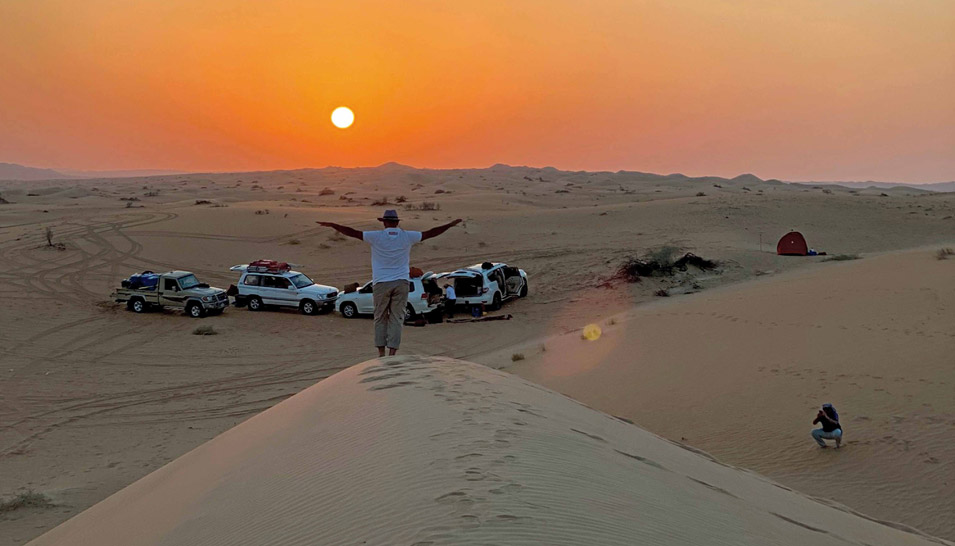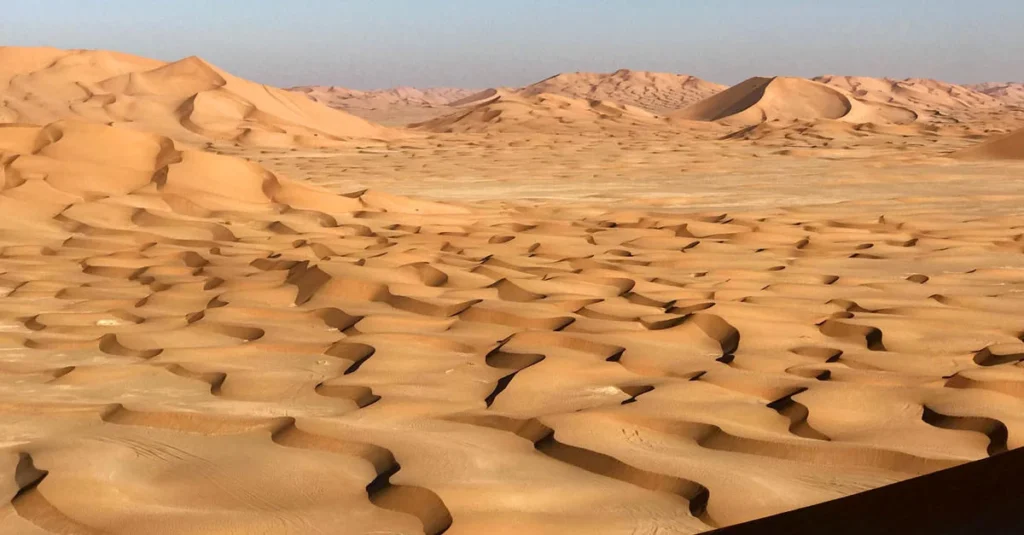Stretching across approximately 650,000 square kilometers of the Arabian Peninsula, the Rub’ al Khali—known in English as the Empty Quarter—is the largest continuous sand desert in the world. Spanning parts of Saudi Arabia, Oman, the United Arab Emirates, and Yemen, this vast sea of dunes, salt flats, and barren rock has long captured the imagination of explorers, poets, and adventurers.
To cross the Empty Quarter is to enter one of Earth’s most extreme and enigmatic environments, where the limits of endurance meet the timeless beauty of nature’s rawest forms.
The Vastness and Mystery of the Empty Quarter

The Rub’ al Khali’s name is fitting. For centuries, this desert was considered uninhabitable—a forbidding expanse of shifting sands and intense heat that repelled all but the hardiest of nomads and explorers. Even today, its vastness is humbling; the dunes can rise over 250 meters high, stretching endlessly under a scorching sun.
Despite its name, the Empty Quarter is not completely devoid of life. Some Bedouin tribes have called its edges home for generations, adapting with remarkable ingenuity to the scarce water and harsh conditions. Flora and fauna, including resilient desert plants, camels, and desert foxes, eke out survival in this relentless landscape.
Historical Expeditions and Legends
The desert has long been steeped in legend. Tales of lost cities, hidden oases, and ancient trade routes weave through Arabian folklore. In the 20th century, explorers like Wilfred Thesiger famously ventured deep into the Rub’ al Khali, documenting their journeys through journals and photographs that revealed a world previously unknown to outsiders.
Thesiger’s 1945-1950 expeditions showcased the desert’s formidable challenges: sandstorms that could strip flesh from bone, searing days and freezing nights, and the constant search for water. His accounts remain a testament to human endurance and the spirit of discovery.
Preparing for the Crossing

Crossing the Empty Quarter today still requires careful preparation. Modern travelers rely on 4×4 vehicles, GPS navigation, and support teams, yet the desert’s dangers remain very real.
Water is the most critical resource; even brief miscalculations can prove fatal. Sandstorms can strike with little warning, obscuring visibility and altering landmarks. Temperatures soar above 50°C (122°F) in summer and plunge near freezing at night.
Experienced guides stress the importance of respect—for the desert, for survival skills, and for the Bedouin knowledge passed down through generations.
The Experience of Crossing

Travelers who undertake the crossing often describe it as a spiritual as well as physical journey. The silence is profound—broken only by the wind shifting sand dunes like ocean waves.
Navigating endless ridges of sand requires patience and skill. At times, the desert seems to swallow the horizon; at others, a lone acacia tree or shimmering mirage offers fleeting hope. Nights under the desert sky reveal a cosmos more vivid than any city can offer, with stars spilling across the black velvet above.
Environmental and Cultural Significance
The Rub’ al Khali is not just a physical space; it’s a cultural landscape. Bedouin traditions, poetry, and survival techniques are intertwined with the desert’s rhythms. Many Bedouins still maintain semi-nomadic lifestyles, herding camels and preserving oral histories that honor the desert’s spirit.
Efforts to protect this fragile environment face challenges from oil exploration and development. Balancing economic interests with conservation is a critical ongoing concern.
Reflections on Solitude and Survival
Crossing the Empty Quarter is a profound reminder of human vulnerability and resilience. In this vast emptiness, the desert strips away modern distractions, revealing core truths about endurance, adaptation, and the interconnectedness of life and land.
It’s a landscape that humbles, inspires, and challenges all who dare to traverse it.
